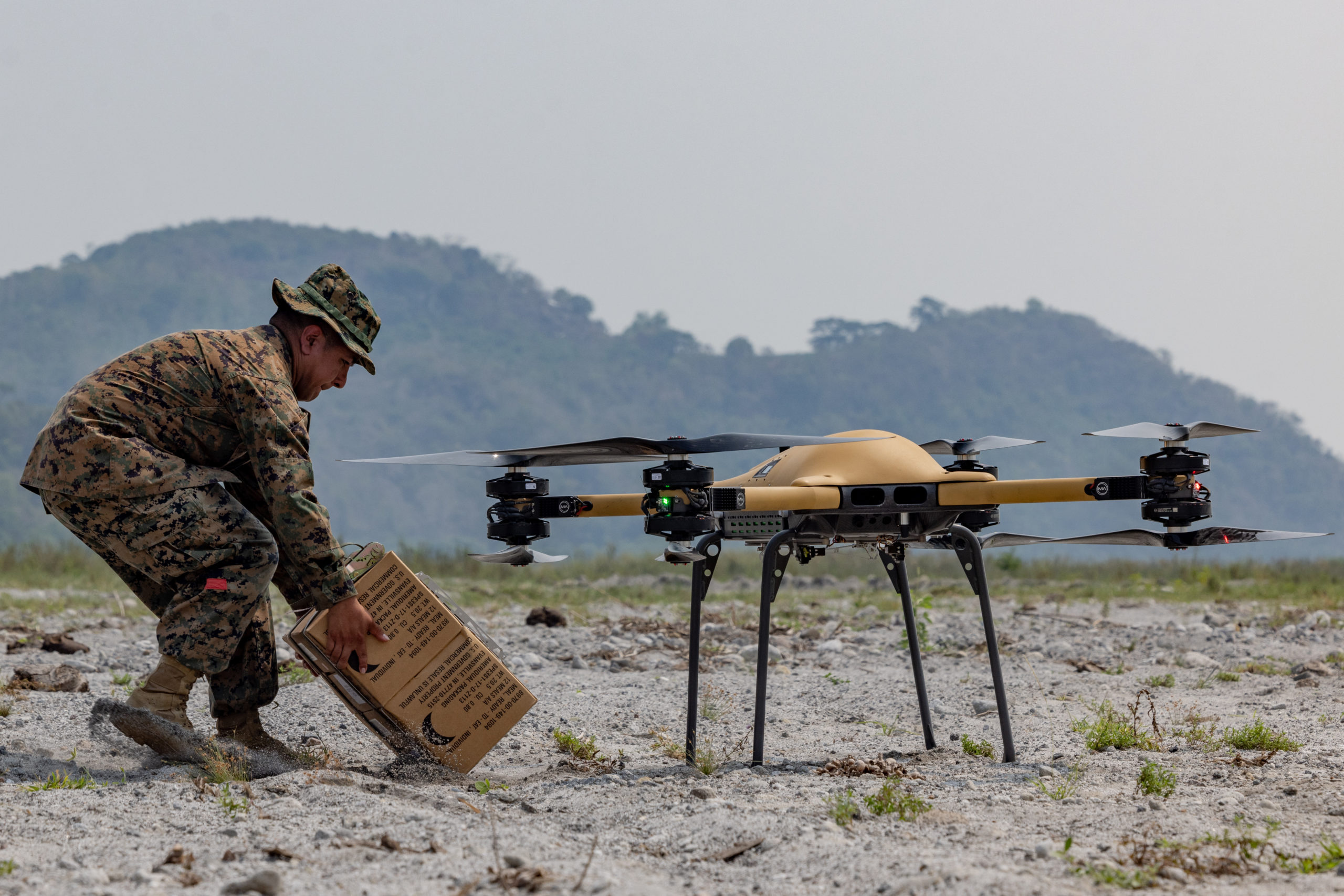A USMC Perspective on Intelligent Robotics and Autonomous Systems
On June 21, 2023, Maj Keenan Chirhart, published his perspective on the coming of uncrewed systems to the USMC and their significance for shaping a way ahead for USMC concepts of operations. That article follows:
The United States has long enjoyed a technological advantage as our robust industrial base and strong economy have provided our military with exquisite combat systems. As a result, the U.S. has had been the preeminent global power since the end of the Cold War. However, the decreasing cost of technology combined with commercial availability of equipment that provide an asymmetric effect means the U.S. military must find new and innovative ways to leverage this growth in technology. To do so, the U.S. military must be prepared to incorporate new warfighting techniques to meet the growing threat of an increasingly technologically advanced adversary.
Today, the Marine Corps is leading the services in development and integration of these emerging technologies. Paired with the sound combined arms doctrine that defines our Marine Corps, Intelligent Robotics and Autonomous Systems (IRAS) provides vastly increased situational awareness across all echelons of warfare. All-domain sensors that detect the enemy throughout the electromagnetic spectrum and pass real time targeting data over vast distances makes the battlefield increasingly transparent for the individual Marine and up through the chain of command, enabling sensors, weapons, and decision makers to rapidly close kill webs and destroy the enemy.
The ability to exploit the vast amount of information being received in the combat environment presents a cognitive challenge, as the commander’s decision-making becomes increasingly overloaded. Conversely, the vast amount of information also creates opportunity. Those forces that can most rapidly and effectively process information have a distinct advantage.
Software developments in artificial intelligence and machine learning lighten the mental burden by rapidly organizing data in a logical and prioritized manner. Through rapid prioritization, Marines can “make sense” and act before the enemy. By establishing this competitive advantage, the adversary targeting, and decision cycle is disrupted, increasing survivability and expediting movement and maneuver. Ultimately, the combination of Marine decision makers with IRAS creates tempo that cannot be matched by the enemy.
As the operating environment becomes increasingly contested through the adversary’s use of anti-access/area denial systems, the ability to sustain our operating forces inside the enemy weapons engagement zone presents a significant logistical challenge. The physical burden on Marines to carry more supplies and ammunition inhibits their ability to rapidly displace and maneuver, creating exposure to the enemy and risk to the force. IRAS will lighten the Marines’ physical load, expedite staging and transfer supplies across vast distances in the maritime environment. Using a range of air, land, and surface logistical connector vehicles will enable ship-to-shore sustainment of maneuvering units, while reducing the risk to legacy manned resupply aircraft.
To maximize the benefits of IRAS, these systems must operate through networked, collaborative, autonomy. By fusing data from distributed platforms and operating from common mission controllers, individual warfighters will be able to control multiple platforms and payloads to accomplish their mission. Working with leading industry partners and research agencies, the Marine Corps is developing vehicles that will be able to conduct swarming maneuvers and attacks. These swarming vehicles leverage numerous systems to sense each other across the network, process information at machine speeds, and enable kinetic effects with maximum efficiency. This technology will decrease the number of munitions required to create strategic effects, rapidly closing kill webs and further decreasing the logistics burden.
The category of warfighting tools historically referred to as “unmanned” provides an incomplete description of these capabilities. While this was a commonly accepted term, the human element in warfighting should not be discounted. Most important to successful employment of IRAS is human oversight and interaction for successful employment. Additionally, as IRAS are interoperable, modular, and secure allowing for streamlined training and proficiency, reducing cost, time to train, and manpower requirements.
As the threat and operating environment continue to change over time, the future remains clouded in ambiguity. If technology growth continues its current, exponential path, Marines in the future may find themselves equipped with physical augmentations, and hybrid virtual reality optics. Furthermore, teaming between legacy manned and IRAS fighter jets will also enable our cutting-edge aircraft. Manned aircraft will become more survivable, and their signature optimized. Weaponized IRAS aircraft will execute the will of the pilots and conduct dogfighting by predictive modeling to defeat enemy formations before they can even maneuver.
While ambitious and imaginative, the Marine Corps is exploring technologies that can someday make this vision a reality. The exponential growth of IRAS converging with new warfighting concepts will enable Marines to operate in distributed environments, with low cost, persistent, signature managed systems. Future Marines must be prepared to fight in new ways to confront the evolving threat, and commanders must build trust in IRAS to ensure their formations maintain the tactical advantage with maximum lethality. Leaders at all echelons must also develop feedback mechanisms to allow the service to understand the evolving needs of the warfighter and equip them with the latest IRAS that allow them to locate, close with, and destroy the enemy.
Featured Image: U.S. Marine Corps Cpl. Mark Bernal, a landing support specialist with 3d Littoral Logistics Battalion, 3d Marine Littoral Regiment, 3d Marine Division, receives a package from a TRV-50 Tactical Resupply Unmanned Aircraft System as it lands to resupply U.S. Marines in the field during Balikatan 23 in Cerab, Philippines, April 21, 2023.
U.S. Marine Corps photo by Cpl. Tyler

